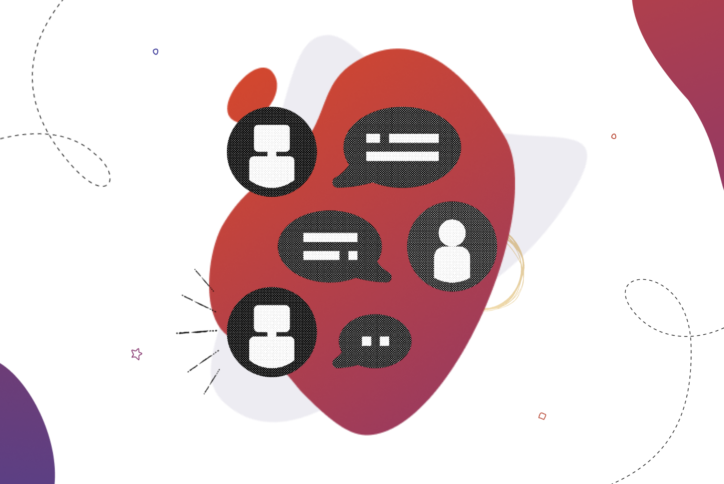AI customer service chatbots can be a valuable tool — when used thoughtfully.
In the past few years, artificial intelligence has made tremendous strides. One needs only to experiment with feeding prompts into the AI image-generating model DALL·E Mini, listen to music composed by AI, or read transcripts of the eerie conversations that convinced Google engineer Blake Lemoine that the company’s language model had become sentient to discover the rapid advancement and bewildering potential of artificial intelligence technology.
The implications for businesses are similarly immense, especially in the area of customer service. In fact, many businesses have already adopted advanced AI customer service tools, like chatbots. But do they really help companies reduce costs and increase sales? Or are chatbots just another fad that won’t last?
Whether or not a chatbot is right for your business depends on your resources and customer service needs. If you do choose to use AI customer service tools, it’s important to be aware of certain pros and cons — and to make sure you are not causing more problems than you are solving.
To learn more about the use of artificial intelligence in customer service, how you can get the best out of these tools for your business, and how to avoid potential pitfalls, continue reading below.
AI Customer Service: Should Your Company Use Chatbots?

How Is AI Used in Customer Service?
An AI chatbot is a computer program designed to autonomously process and simulate natural conversations with human users, especially in text chats over the internet. Fundamentally, this is something of a highly-advanced form of mimicry — chatbots generate outputs, or responses, from a limited database, meaning they can only respond to queries that exist within their pre-programmed parameters and keywords.
At the same time, through natural language processing and machine learning, they can generate highly convincing conversational responses that may even fool users into thinking they really are speaking to another human.
When applied to customer service, chatbots can effectively provide cheaper, faster responses to customer queries. With chatbots, businesses can engage with an unlimited number of customers twenty-four hours a day, scale the customer service operation up or down according to demand and the business needs, and do it all for significantly less than it would cost to maintain a staff of customer support representatives for even a portion of each day.
As users increasingly interact with the digital world through mobile devices, chatbots also play an important role in customer communications on mobile-first messaging applications.
That all sounds pretty good. But before you rush out right away to set up your company’s new chatbot, it’s critical that you understand what these tools can — and cannot — do.
Of course, reduced wait times, increased accessibility to customer support, and reduced operational costs are not insignificant benefits. However, remember that the objective of good customer service is to make sure your customers are satisfied and that any issues are promptly resolved. A tool like a chatbot may be efficient, but as a solution for your business and brand, it is only as good as it is effective.
Like many tools, much of what will make a chatbot useful or frustrating for your customers comes down to how you choose to use it.

Are Chatbots Good for Customer Service?
From a utilitarian perspective, the answer is yes: chatbots can be very helpful for providing quick answers to quick and common questions.
But they are not a universal or one-size-fits-all customer service solution. For example, they lack the necessary context and nuance to answer more complex or individualized questions.
Relying too heavily on AI can lead to an overall reduction in the quality of your support, not to mention misunderstandings, inaccurate information, and escalating frustration for your customers. Nevertheless, with a little preparation and thought, it is possible to take advantage of the benefits of chatbots while avoiding the drawbacks.
Some simple best practices can go a long way toward maximizing the effectiveness of a chatbot. At Sociality Squared, our philosophy could be summed up as: Turn the chatbot on, but don’t expect it to replace human representatives.
To put that philosophy into practice, we recommend to our clients that they use chatbots to field FAQs and scale up the operation in terms of availability while also maintaining a customer care team to manage, monitor, and follow up on customer interactions.
It’s also important to use chatbot interactions to set expectations. For example, if your customer care team works from 9:00 am-5:00 pm in your timezone, have your chatbot let users who reach out after 5:00 know that a human will get back to them in the morning if their question can’t be easily answered by the AI.
Often, customers will be flexible and understanding when given the appropriate information and provided you follow through with personalized attention. On the other hand, if they are left endlessly fighting with a chatbot with no avenue to escalate their question or issue, it is unlikely you will leave them with a positive impression of your brand.

Would You Like Some More Help?
Now that you understand the basics of AI customer service best practices, you may wonder how to proceed with setting up a chatbot. On Facebook, you can easily and natively set up automatic responses by turning on instant replies to Page messages. This allows you to send automatic replies to newly received messages — for example, letting the sender know what hours your customer care team is on duty, when they can expect a response from a human, and where they can find answers to frequently asked questions in the meantime.
As a Sprout Social Agency Partner at S2, we turn to Sprout’s Bot Builder tool suite for more advanced chatbot functionality, such as crafting a bot’s voice and personality, mapping customer journeys, building out conversation trees, running live previews, and more.
Of course, the thoughtful application of AI chatbot tools is just one facet of our approach to customer care at Sociality Squared.
Reach out today to learn how other aspects of our strategy, such as voice guides, brand cheat sheets, Sprout Social’s customer care tools, and more, can help elevate your business and deliver experiences that exceed expectations and delight your customers.
Subscribe to our monthly S2xAccess newsletter:
